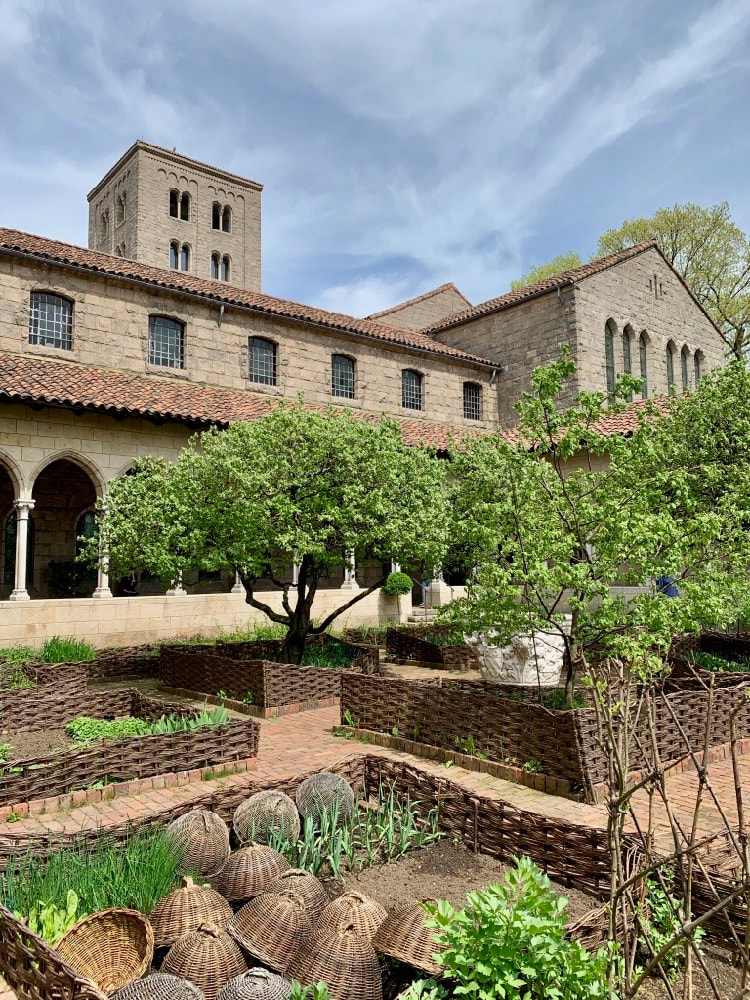|
When our friend in New York asked us if we want to go to the Cloister, our first reaction was, Why go to a convent? To our relief, this is far from being one. It is a museum, a part of the MET in New York. It is just called the Cloister because it was designed as a cloister to house the treasures that were from the medieval times mostly taken from old Churches and monasteries in France and Spain and to evoke the feeling of being in a monastery which during that time, housed most of the treasures of the time. Located in Fort Tryon Park in Washington Heights in New York, this place can easily be reached by subway which is faster or by bus (M4) from Manhattan with the Cloister as its last stop. Just be prepared to sit on the bus longer. Though the trip is long, the quiet, calm and history the place offers is worth all of that. You can spend the whole day here, bring a picnic and enjoy the gardens, the displays and the river meandering right around the front of the Museum. Besides, it will give you a glimpse of the lively Latino section of Bronx, New York. Because we took the subway going, we got out into the streets of Bronx and then, walked to Washington Heights. For me, it was a surprise to be speaking in Spanish when asking for directions and to hear Spanish as the language in the streets. Simply shows how metropolitan New York is. Below is the entrance to the Museum. You can see that it is part of the Met so keep your tickets. You can use it at the Met the next day or if you were first at the Met you can use your ticket from the Met to see this place. As it is in the vicinity of a huge park with the amazing view of the Hudson River, you can spend a day here to enjoy nature, the beautiful landscape and the calm and quiet which is a contrast to the busy streets of downtown Manhattan. The arches are decorated by pillars from the old abbeys of the medieval times. The display is divided into four cloisters: the Cuxa, Saint-Guilhem, Bonnefont and Trie. It holds around 5,000 works of art depicting the medieval period especially the Romanesque and Gothic. The Cuxa cloisters were originally at the Benedictine Abbey of Sant Miquel de Cuixà on Mount Canigou, which was founded in 878 in the northeast French Pyrenees. The Saint-Guilhem cloisters were taken from the site of the Benedictine monastery of Saint-Guilhem-le-Désert, and date from 804 AD to the 1660s. The Bonnefont collection were originally from several French monasteries, but mostly come from a late 12th-century CistercianAbbaye de Bonnefont at Bonnefont-en-Comminges, southwest of Toulouse. You can see the Chapter Hall of the Abbey in the picture above. The Trie cloisters was compiled from two late 15th- to early 16th-century French structures. Most of its components came from the Carmelite convent at Trie-sur-Baïse in south-western France. The tapestry collection featured an impressive unicorn display like the one below. Altar and altar pieces are some of the most prominent displays as you can see below. Below is the Langon Chapel assembled from one of the old monasteries in 12th century France. The Cloister has three gardens: the Judy Black Garden at the Cuxa Cloister on the main level, and the Bonnefont and Trie Cloisters gardens on the lower level. These gardens were designed and planted in 1938 when the building was built. They contain a variety of rare medieval species, over 250 genera of plants, flowers, herbs and trees. It is interesting to explore the various plants as they are all properly labelled. The labels give us actual images of plants we have only read about that were very useful to life during the medieval times. Personally, I spent so much more time here just getting to know the plants. Address: 99 Margaret Corbin Dr, New York, NY 10040, USA Sources:
https://en.wikipedia.org/wiki/The_Cloisters
0 Comments
Your comment will be posted after it is approved.
Leave a Reply. |
Archives
January 2024
|







